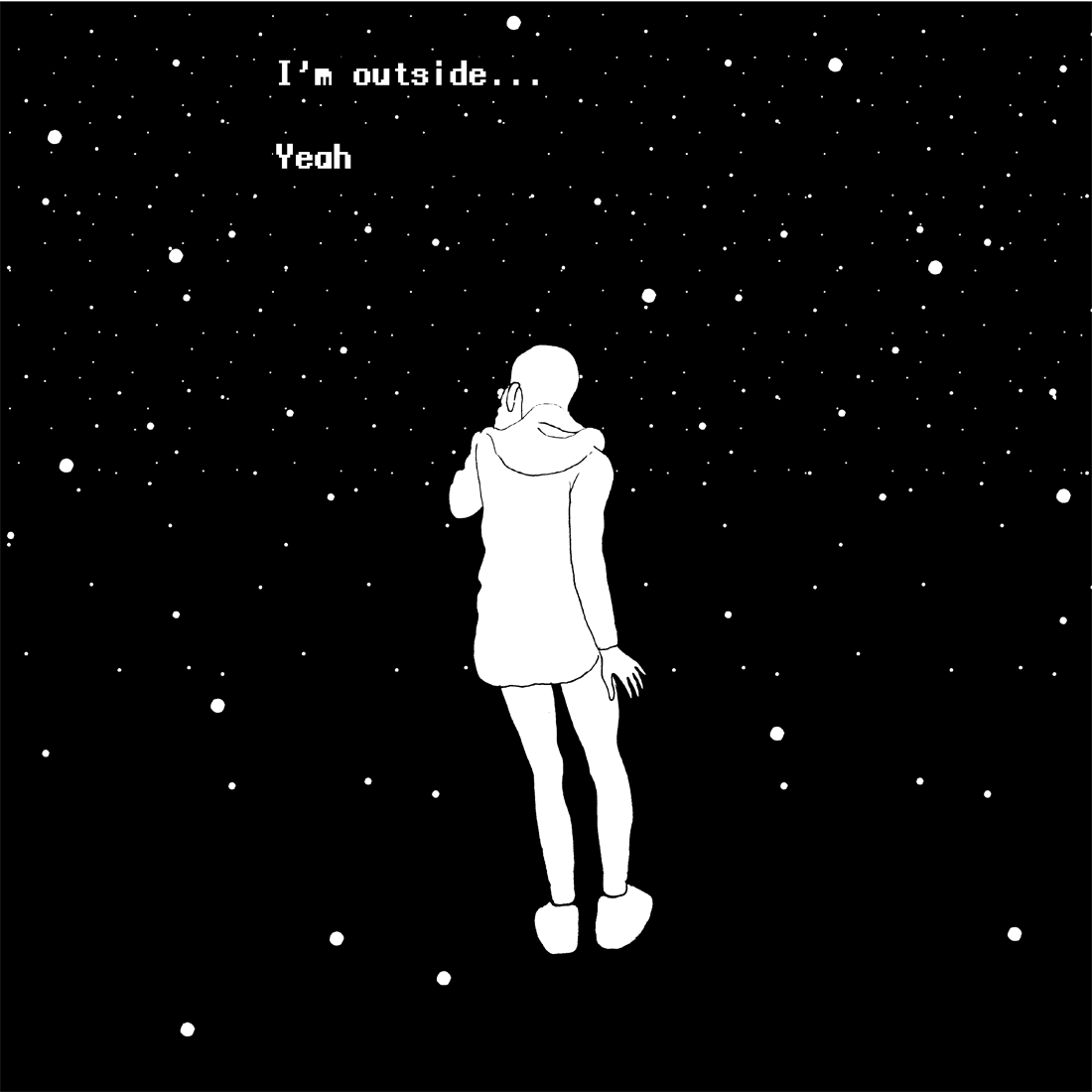2001 (2011). Blaise Larmee.
The comic we're going to talk about to day is a webcomic, which is cool because it means you don't have to leave your seat to read it. That's just one picture up there: the sequence is here. Go take a look, then come back.
You good? Ok.
The webcomics medium itself forces the artist to confront choices that the printed page does not. The most obvious as well as the most important is just that, the lack of a page. In print, everything a cartoonist does has to hang around the page, the non-negotiable single unit, the contributing part of the whole. Unless the work in question is a Sunday page-style one sheet (pretty much a dead form in comics, honestly), it has to deal with those splits, the spaces between pages. One of the most special and unique things about comics is how it can present multiple story moments for simultaneous viewing with paneled pages, but that simultaneity only extends until the end of the page. Pages break things up by the very nature of what they are.
The internet, on the other hand, is an endless visual landscape, the page turn as foreign to it as any other print-specific concern. Some webcomics betray their ties to print by imposing page turns on the reader. Blaise Larmee's 2001 does not, fully embracing the internet's potential to create new forms of comics. 2001 is a single sequence, uninterrupted and beautiful, a comic that just goes on and on and on without ever stopping. What's interesting about the way Larmee uses the "scroller" format is that it creates new kinds of divisions between the images along with destroying the old ones. There are no page turns, true, no barriers dividing one group of pictures form the next -- but the simultaneity of multi-paneled pages is also gone. Larmee gives his single images a size and dimension designed to take up more than the entirety of a typical horizontal-orientation rectangular browser window, focusing readers on isolated single moments, denying them access to what happens next until they've moved through what's happening now.
On a page of comics the eye can always see the next panel on, even if the reader's mind isn't paying conscious attentition to it. Subconsciously at least, printed comics always tell you what happens at the end of a spread of pages before you get there reading it. Traditionally, comics suspend readers in a series of moments, a section of time portrayed in still images, to be navigated as the reader sees fit. Larmee takes away that element of choice, and the result is a much more deeply immersive reading experience than any paneled page can muster. Each image exists on its own, a drawn moment that takes up all the reader's attention until it's been scrolled all the way through.
Just as important, the question of navigation is largely pre-determined. A multi-paneled page of comics offers the reader a million choices: there's the "right" way to read it, of course, but it's just as easy to construct one's own orders within the page, to ignore the flow the artist has calibrated and make up a new path through the panels for yourself. Even in comics with full-page panels, the reader can subvert the author's attempt at pre-determined sequencing by simply flipping the pages in random order. They're all there, after all. Larmee, however, uses the mechanism of the scroll and his comic's lack of simultaneity to exercise a greater degree of authorial control than print allows. There's only one way you can read 2001: by scrolling down along the linear pathway Larmee has laid out for us to follow. There are still ways to read it that don't go beginning to end -- scrolling from bottom to top, stopping midway and going back up, et cetera -- but it can't really be read "out of sequence". By making the images big enough to only be seen one at a time, Larmee ensures that any scroll through his comic will take readers from image to image in the order he has sequenced them.
It would be easy enough to get lost in a comic that strands you in single panels with no visual access to the next or the previous. But Larmee's sequencing is exceptionally tight, each panel barely a progression from the last, a few instants at most elapsing between the pictures. There are no jumps in time or sudden cuts here: everything that occurs is being shown. The detail left out in the gorgeously creamy, high-contrast drawing is taken up by the sequence, which makes a point of getting every last thing into the comic. It's almost filmic, a linear depiction of time that leaves no room for question. The scroller format's sense of smooth, continuous motion is complemented beautifully by the way Larmee composes his single, massive sequence. All figure animation, the characters' motions through space tracked smoothly by a camera that never lets them leave the center of the frame for long, it adds greatly to the comic's immediacy, the feeling that these are real moments unfolding as we comprehend them.
It's a real moment for comics, at least. Scrollers were around before Larmee did 2001, and there's no reason whatsoever for them to go anywhere. But 2001 is a laying down of new grammar for comics, a boldly innovative reading of the medium's formal properties that points toward as yet undiscovered new potentials. It's undoubtedly a beautiful comic. The most important thing about it, though, may end up being the simple fact that it exists in new territory, out there on its own somewhere nothing else has ever been.


